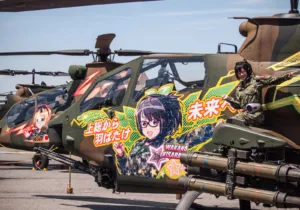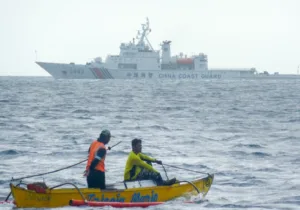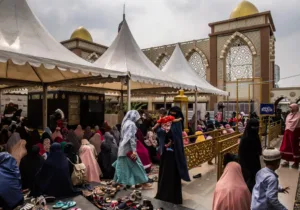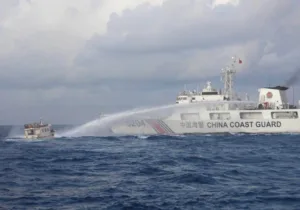In the first six to twelve months of a war with the United States and Great Britain, I will run wild and win victory upon victory. But then, if war continues after that, I have no expectation of success.
– Admiral Isoroku Yamamoto[1]
Such were the thoughts of the man who executed the surprise attack on Pearl Harbor. Yamamoto, who had served as Japan’s naval attaché in Washington in the 1930s, was painfully aware of America’s vast population and industrial capacity, and knew that its resources dwarfed his own country’s.
Americans did not learn of his grave doubts until after the war, however, and in the aftermath of Pearl Harbor they saw only a Japanese war machine that stampeded unhindered across the Pacific. Seemingly before the smoke had even cleared at Pearl Harbor, the Philippines, Wake Island, and Guam fell. British battleships Repulse and Prince of Wales went to the bottom of the Indian Ocean before Malaya and Singapore passed from the British to the Japanese Empire. At the Battle of the Java Sea, a Japanese force brushed aside a combined American-British-Dutch-Australian fleet before seizing the Dutch East Indies and their precious oil supplies. Meanwhile, racial attitudes of the day that had once seen Asians as inferior fighters gave way to depictions of Japanese warriors as so fearsome and remorseless as to be well-nigh invincible in combat.[2]
Yet, almost exactly on the timetable Yamamoto predicted, the situation in the Pacific Theater began to turn. In the summer of 1942—Yamamoto’s six-month mark—two crucial days tore away the aura of invincibility and stalled Japan’s advance. From June onward, the Japanese military fought an increasingly hopeless defensive war against the U.S. industrial juggernaut.
For all its advantages, American victory was not foreordained. Yamamoto’s doubts were well-founded, but the Japanese high command also understood that they did not have to vanquish the United States; they only had to make the costs of war so high that Washington would accept a negotiated peace, one that left Japan with a substantial empire and hegemony over the Pacific. The spring and summer of 1942 were crucial months in shifting the balance of power in the Pacific before the costs of American victory could be made even more exorbitant. Seventy-five years later, it is a good time to reflect on the momentous events of that season, and on how quickly the course of history can turn.
The sense of national outrage sparked by Pearl Harbor demanded a response, though at first America’s ability to retaliate was meager indeed. While America slowly geared up her production and war preparation, President Franklin Roosevelt demanded a more immediate response, even if only a token one. Under the command of Lieutenant Colonel James Doolittle, B-25s took off from an aircraft carrier on the morning of April 14, 1942, for a bombing run over Japan. The mission, on the surface, was ludicrous. Indeed, after the war a Naval War College analysis found “no serious strategical reason” for the attack, which involved flying over 650 miles to Japan and then using the last reserves of fuel to reach China. The bombs produced scant physical damage on the Japanese homeland, to the point that most Japanese civilians either knew nothing of the attack or ignored it. Still, Doolittle’s raid became one of the most momentous events of the war. Japan’s strategy hinged on protecting the homeland and fighting the U.S. Navy on a far perimeter. Now, a mere five months after Pearl Harbor, the capital itself had been breached.
More importantly, Doolittle had a direct hand in deciding Japan’s next move. While the Naval General Staff prudently called for consolidating Japan’s recent gains and building up bases to menace Australia, Yamamoto pressed for another daring stroke—seizing Midway Island, threatening Hawaii with an invasion, and thus forcing the remainder of the U.S. Fleet into battle before it was ready. An assault on Midway promised the chance to complete the destruction of the U.S. Navy in the Pacific that had begun at Pearl Harbor. Indeed, if Japan could take and hold Midway, it might even be able to leverage the island as a bargaining chip to end the war right away. For all its promise, of course, Yamamoto’s plan carried substantial risk, but the Doolittle raid showed that leaving American carriers to run loose in the Pacific while Midway remained a gaping hole in the line of defense carried even greater risks.[3]
In the early predawn haze of June 4, 1942, a Japanese fleet under the command of Admiral Chuichi Nagumo began their assault on Midway Island. The early action belied the history-altering day that lay ahead. Japanese bombers had a limited impact on the American base there, and Nagumo asked for a second strike later that morning. Meanwhile, Midway-based American bombers splashed their loads fruitlessly about the Japanese force, without damaging a single ship.
Confident of victory, the Japanese admiral ignored Yamamoto’s order to keep half his planes in reserve in case he encountered the American fleet. Disgusted at the thought of nearly a hundred aircraft sitting idle while a chance to win the war hung in the balance, he brought those planes out on the decks and began the hour-long task of arming them for a killing strike against the island. Another hour found them still unready for takeoff, however. When scout planes brought word that an American fleet was indeed in the area, Nagumo leapt at the chance for decisive battle, and gave the order to refit the planes with anti-ship weapons.
Even as this rearmament took place, the battle continued to go in Japan’s favor. Several American bombers, stretched to the limit of their fuel capacity, dropped from the skies without the Japanese needing to fire a shot. Others were blown from the air by the dreaded Zeros—Japanese attack planes—and impressive anti-aircraft fire from Nagumo’s fleet. Low-flying torpedo bombers from the aircraft carrier Yorktown suffered devastating losses in their engagement with the Zeros, and by 10:30 Nagumo eagerly prepared to crush the American ships that had escaped Pearl Harbor, seize a vital base within striking distance of Hawaii, and force the Americans to the negotiating table.[4]
And then, in the span of less than 10 minutes, the course of history changed. “Navigating by guess and by God,” Dauntless dive bombers from the Yorktown and Enterprise broke through the clouds while Japan’s Zeros were flying low to the seas polishing off their engagement with torpedo bombers. Unleashing their loads on Japanese decks strewn with refueling and rearming aircraft, the Dauntless crews destroyed three out of Nagumo’s four carriers in a single stroke. Two sank within hours, and a third went to the bottom during the night. Later that afternoon, American pilots added to their victory by sinking a fourth. Of the six aircraft carriers that had executed the attack on Pearl Harbor, only two remained.[5]
Midway tilted the scales of the Pacific war. Going into the battle, Japan boasted six aircraft carriers to America’s three. Although the Yorktown, already wounded from the Battle of the Coral Sea, went down later on the afternoon of June 4, this was small consolation to the devastated Japanese fleet. The United States now possessed double the carriers of Japan, instead of the other way around.
Moreover, the victory reversed the roles of the combatants—where Japan had been on the offensive and America struggling on defense, Midway convinced the U.S. leadership to seize the initiative in the Pacific. Given the juggernaut of American industry, the odds would only grow bleaker for Japan. Her last chance to force a peace passed almost precisely six months after the stunning victory of Pearl Harbor, just as Yamamoto had feared.[6]
—
Thomas Sheppard holds a PhD in military history from the University of North Carolina. He lives in Washington, DC, where he writes on history, foreign policy, and national security issues.
Photo Credit: U.S. Navy Douglas SBD-3 Dauntless dive bombers from Scouting Squadron 8 (VS-8) from the aircraft carrier USS Hornet (CV-8) approaching the burning Japanese heavy cruiser Mikuma to make the third set of attacks on her, during the Battle of Midway, 6 June 1942. U.S. Navy photo, via National Archives and Records Administration.
[1] Dallas W. Isom, Midway Inquest: Why the Japanese Lost the Battle of Midway. Bloomington, IN: Indiana University Press, 2007: 165.
[2] Samuel Eliot Morison, The Two-Ocean War: A Short History of the United States Navy in the Second World War. Boston: Little, Brown & Company, 1963: 137-138; David M. Kennedy, Freedom from Fear: The American People in Depression and War, 1929-1945. New York: Oxford University Press, 1999: 526-532.
[3] Ronald Spector, Eagle Against the Sun: The American War with Japan. New York: The Free Press, 1985: 154-155.
[4] Craig L. Symonds, The Battle of Midway. New York: Oxford University Press, 2011: 218-244.
[5] Kennedy, Freedom from Fear: 540-543.
[6] Symonds, Battle of Midway: 357-358.







 Live in the DC area? Sign-up for Providence's in-person events list!
Live in the DC area? Sign-up for Providence's in-person events list!